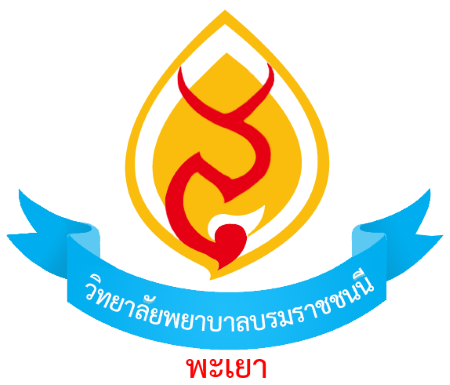การศึกษาสถานการณ์การตอบสนองอย่างรวดเร็วของทีมพยาบาล ในการดูแลผู้ป่วยสูงอายุในหอผู้ป่วยพิเศษ
คำสำคัญ:
การตอบสนองอย่างรวดเร็ว, ทีมพยาบาล, ผู้ป่วยสูงอายุ, การวิเคราะห์สถานการณ์บทคัดย่อ
ผู้สูงอายุเป็นผู้ป่วยกลุ่มเสี่ยงที่ต้องอาศัยความชำนาญของทีมพยาบาลในการดูแล การวิจัยเชิงคุณภาพนี้ มีวัตถุประสงค์เพื่อศึกษาสถานการณ์การตอบสนองอย่างรวดเร็วของทีมพยาบาลในการดูแลผู้ป่วยสูงอายุในหอผู้ป่วยพิเศษ ผู้ให้ข้อมูลคือ ทีมพยาบาลที่ปฏิบัติงานในหอผู้ป่วยพิเศษ ประกอบด้วย พยาบาลวิชาชีพ 10 คน ผู้ช่วยพยาบาล 6 คน เครื่องมือที่ใช้ในงานวิจัย ประกอบด้วย ผู้วิจัย แบบบันทึกข้อมูลส่วนบุคคล แบบสัมภาษณ์กึ่งโครงสร้าง และเครื่องบันทึกเสียง เก็บรวบรวมข้อมูลโดยการสัมภาษณ์แบบเจาะลึกรายบุคคล ข้อมูลจากการสัมภาษณ์นำมาถอดความแบบคำต่อคำ วิเคราะห์ข้อมูลโดยใช้วิธีการวิเคราะห์เนื้อหา และการสร้างความน่าเชื่อถือของข้อมูลตามแนวทางของ ลินคอล์นและกูบา ผลการศึกษา พบว่า การตอบสนองอย่างรวดเร็วของทีมพยาบาลในการดูแลผู้ป่วยสูงอายุ มี 5 ประเด็น คือ 1) ขาดระบบประเมินและการค้นหาผู้ป่วยสูงอายุกลุ่มเสี่ยงที่เป็นรูปธรรมชัดเจน 2) ความรู้และทักษะของทีมพยาบาลไม่เพียงพอ ส่งผลให้การดูแลไม่เหมาะสม 3) ขาดการสื่อสารปัญหาและร่วมกันพัฒนาคุณภาพบริการ 4) ปัญหาและอุปสรรคในการดำเนินการตอบสนองของทีมพยาบาลในการดูแลผู้ป่วยสูงอายุ 5) ปัจจัยสนับสนุนให้การตอบสนองของทีมพยาบาลในการดูแลผู้ป่วยสูงอายุ ประสบความสำเร็จ ผลการวิจัยสะท้อนความจำเป็นในการพัฒนาองค์ความรู้ และทักษะของทีมพยาบาลในการประเมิน การดูแลผู้สูงอายุแบบครอบคลุม การสื่อสารเพื่อการบริหารจัดการอย่างมีประสิทธิภาพ และสามารถนำไปพัฒนารูปแบบการตอบสนองอย่างรวดเร็วของทีมพยาบาลในการดูแลผู้ป่วยสูงอายุในอนาคตได้
เอกสารอ้างอิง
คุณากร เอี้ยวสุวรรณ, ธนนรรจ์ รัตนโชติพานิช, กัญจนา ติษยาธิคม, วลัยพร พัชรนฤมล, สุพล ลิมวัฒนานนท์ และจุฬาภรณ์ ลิมวัฒนานนท์. (2560). สถานการณ์การเข้าพักรักษาตัวในโรงพยาบาลและการมีผู้ดูแลในขณะพักฟื้นของผู้สูงอายุในประเทศไทย. วารสารวิจัยระบบสาธารณสุข, 11(2), 248-255.
จิราภรณ์ ศรีอ่อน. (2564). ภาวะฉุกเฉินในผู้สูงวัย (พิมพ์ครั้งที่ 3). นนทบุรี: พี.เอ.ลีฟวิ่ง
จรัญ โดยเจริญ, ฉัตรสุมน พฤฒิภิญโญ และ วิริณธิ์ กิตติพิชัย. (2565). การจัดการความเสี่ยงทางคลินิกของบุคลากรการแพทย์ โรงพยาบาลชุมพรเขตรอุดมศักดิ์. วารสารกฎหมายและนโยบายสาธารณสุข, 8(3), 416-425.
จักรพงศ์ ปิติโชคโภคินท์, พัชรี อมรสิน, สุกัญญา สระแสง และ สายชล ชิณกธรรม. (2562). การพัฒนารูปแบบการส่งต่อผู้ป่วยฉุกเฉินที่มีภาวะวิกฤต ในโรงพยาบาลนาตาล จังหวัดอุบลราชธานี. วารสารวิจัยสาธารณสุขศาสตร์, 8(1), 110-120.
ดวงมาลย์ คำหม่อม. (2563). ประสิทธิผลโปรแกรมเสริมสร้างความรู้และทักษะของผู้ดูแลในการดูแลผู้ป่วยโรคหลอดเลือดสมอง โรงพยาบาลแพร่. วารสารโรงพยาบาลแพร่, 28(1), 92-106.
ทิฐินันท์ บุญเต็ม. (2564). การพยาบาลผู้สูงอายุโรคเรื้อรังมีภาวะพึ่งพิง : กรณีศึกษา. วารสารวิชาการสำนักงานสาธารณสุข จังหวัดมหาสารคาม, 6(11), 66-84.
เทวีรัตน์ ฉวีวรรณ และ ทีปทัศน์ ชินตาปัญญากุล. (2563). ประสิทธิผลของการใช้ระบบตอบสนองเร่งด่วนรามาธิบดีใน หอผู้ป่วยพิเศษ ศูนย์การแพทย์สมเด็จพระเทพรัตน์. วารสารพยาบาลกระทรวงสาธารณสุข, 30(3), 128-143.
บุญทิพย์ นิ่มสะอาด. (2563). การพัฒนาแนวทางการเฝ้าระวังผู้ป่วย โดยใช้สัญญาณเตือนภาวะวิกฤตในหอผู้ป่วยในโรงพยาบาลพระยืน จังหวัดขอนแก่น. วารสารวิจัยและพัฒนานวัตกรรมทางสุขภาพ, 1(1), 173-183.
ปณิตา ลิมปะวัฒนะ. (2560). กลุ่มอาการสูงอายุและประเด็นทางสุขภาพที่น่าสนใจ (พิมพ์ครั้งที่ 2). ขอนแก่น: โรงพิมพ์คลังนานาวิทยา
ปทุมพร สุรอรุณสัมฤทธิ์ และ วราลักษณ์ ศรีนนท์ประเสริฐ. (2562). ความสามารถในการทำงานลดลงของผู้สูงอายุที่เข้ารับการรักษาในโรงพยาบาล. วารสารพฤฒาวิทยาและเวชศาสตร์ผู้สูงอายุ, 8(2), 66-78.
ประภาพรรณ อุ่นอบ, ณภัทร ประภาสุชาติ และ ภัทรียา กิจเจริญ. (2564). ปัจจัยสนับสนุนความสำเร็จของการคัดแยกระดับความฉุกเฉินของผู้ป่วยฉุกเฉินของศูนย์รับแจ้งเหตุและสั่งการ. วารสารการแพทย์ฉุกเฉินแห่งประเทศไทย, 1(1), 3-13.
เพลินพิศ ฐานิวัฒนานนท์. (2559). การดูแลสู่ความเป็นเลิศทางการพยาบาลตามกลุ่มอาการที่พบบ่อยในผู้สูงอายุ. สงขลา: ชานเมืองการพิมพ์
พนิดา จันทรัตน์, เพ็ญแข รัตนพันธ์, ภคินี ขุนเศรษฐ์ และ ปรัชญานันท์ เที่ยงจรรยา. (2566). การพัฒนารูปแบบการเฝ้าระวังสัญญาณเตือน เข้าสู่ภาวะวิกฤตในผู้ป่วยที่มีความเสี่ยงสูง โรงพยาบาลสงขลา. วารสารวิชาการสาธารณสุข, 32(1), 109-118.
เวชสถิติ โรงพยาบาลสงขลานครินทร์. (2565). สถิติผู้ป่วยใน โรงพยาบาลสงขลานครินทร์. สงขลา: โรงพยาบาลสงขลานครินทร์
เวชระเบียนผู้ป่วย โรงพยาบาลสงขลานครินทร์. (2565). เวชระเบียนผู้ป่วยสูงอายุ หอผู้ป่วยพิเศษทั่วไป 2 โรงพยาบาลสงขลานครินทร์. สงขลา: โรงพยาบาลสงขลานครินทร์
วรรณเพ็ญ เนื่องสิทธะ, เพชรสุนีย์ ทั้งเจริญกุล และกุลวดี อภิชาตบุตร. (2561). การวิเคราะห์สถานการณ์การจัดการความปลอดภัยของผู้ป่วย หอผู้ป่วยหนักศัลยกรรม โรงพยาบาลพุทธชินราช พิษณุโลก. วารสารโรงพยาบาลแพร่, 26(1), 47-60.
วิยะดา รัตนสุวรรณ และ ปะราลี โอภาสนันท์. (2561). การพัฒนารูปแบบการเสริมสร้างศักยภาพผู้ดูแลผู้สูงอายุที่มีภาวะพึ่งพิง. วารสารการพยาบาลและการศึกษา, 11(4), 156-174.
สถาบันรับรองคุณภาพสถานพยาบาล. (2560). ระบบการรายงานและเรียนรู้อุบัติการณ์ความเสี่ยงทางคลินิกและเหตุการณ์ไม่พึงประสงค์ประเทศไทย (National Reporting and Learning System: NRLS) [อินเทอร์เน็ต]. เข้าถึงได้จาก https://thai-nrls.org/
สำนักงานหลักประกันสุขภาพแห่งชาติ. (2560). รายงานการสร้างระบบหลักประกันสุขภาพแห่งชาติประจำปีงบประมาณ 2560. กรุงเทพมหานคร: สำนักงานหลักประกันสุขภาพแห่งชาติ. เข้าถึงได้จาก https://www.nhso.go.th/storage/downloads/operatingresult/43/Annual_Report_2560.pdf.
สำนักงานสถิติแห่งชาติ. (2564). สถานการณ์ผู้สูงอายุไทย ในมิติความต่างเชิงพื้นที่ พ.ศ. 2564. กรุงเทพมหานคร: กองสถิติพยากรณ์ สำนักงานสถิติแห่งชาติ. เข้าถึงได้จาก https://www.nso.go.th/nsoweb/storage/ebook/2023/20230506145038_72776.pdf
ศิริลักษณ์ ฤทธิ์ไธสง. (2560). การบริหารความเสี่ยงของโรงพยาบาล ในบริบทของพยาบาลวิชาชีพ. วารสารกฎหมายสขภาพและสาธารณสุข, 3(1), 77-87.
Lincoln, Y. S., & Guba, E. G. (1989). Fourth generation evaluation. Newbury Park, CA: Sage.
Nicholson, K., Randhawa, J., & Steele, M. (2015). Establishing the South Western Academic Health Network (SWAHN): A survey exploring the needs of academic and community networks in South Western Ontario. Journal of Community Health, 40(5), 927-939. doi:10.1007/s10900-015-0015-3
Lyons, P. G., Edelson, D. P., & Churpek, M. M. (2018). Rapid response systems. Resuscitation, 128, 191–197. doi:10.1016/j.resuscitation.2018.05.013
Soar, J., Nolan, J. P., Böttiger, B. W., Perkins, G. D., Lott, C., Carli, P., … Deakin, C. D. (2015). European resuscitation council guidelines for resuscitation 2015. Resuscitation, 95, 100–147. doi: 10.1016/j.resuscitation.2015.07.016
Salvatierra, G. G., Bindler, R. C., & Daratha, K. B. (2016). Rapid response teams: Is it time to reframe the questions of rapid response team measurement? Journal of Nursing Scholarship, 48(6), 616-623. doi: 10.1111/jnu.12252
World Health Organization [WHO]. (2017). Health topic patient safety. Retrieved from https://www.who.int/topics/patient_Safety/en.
ดาวน์โหลด
เผยแพร่แล้ว
รูปแบบการอ้างอิง
ฉบับ
ประเภทบทความ
สัญญาอนุญาต
ลิขสิทธิ์ (c) 2024 วารสารวิจัยการพยาบาลและสุขภาพ

อนุญาตภายใต้เงื่อนไข Creative Commons Attribution-NonCommercial-NoDerivatives 4.0 International License.



